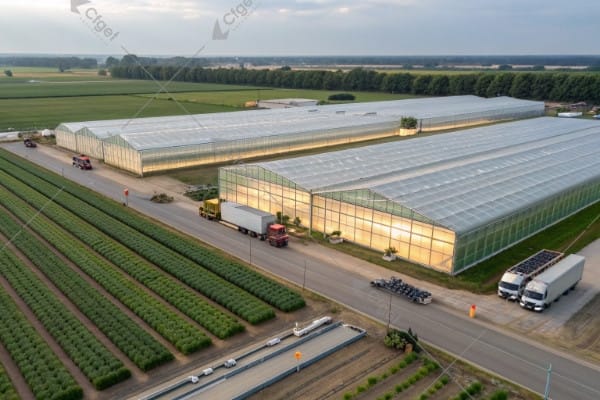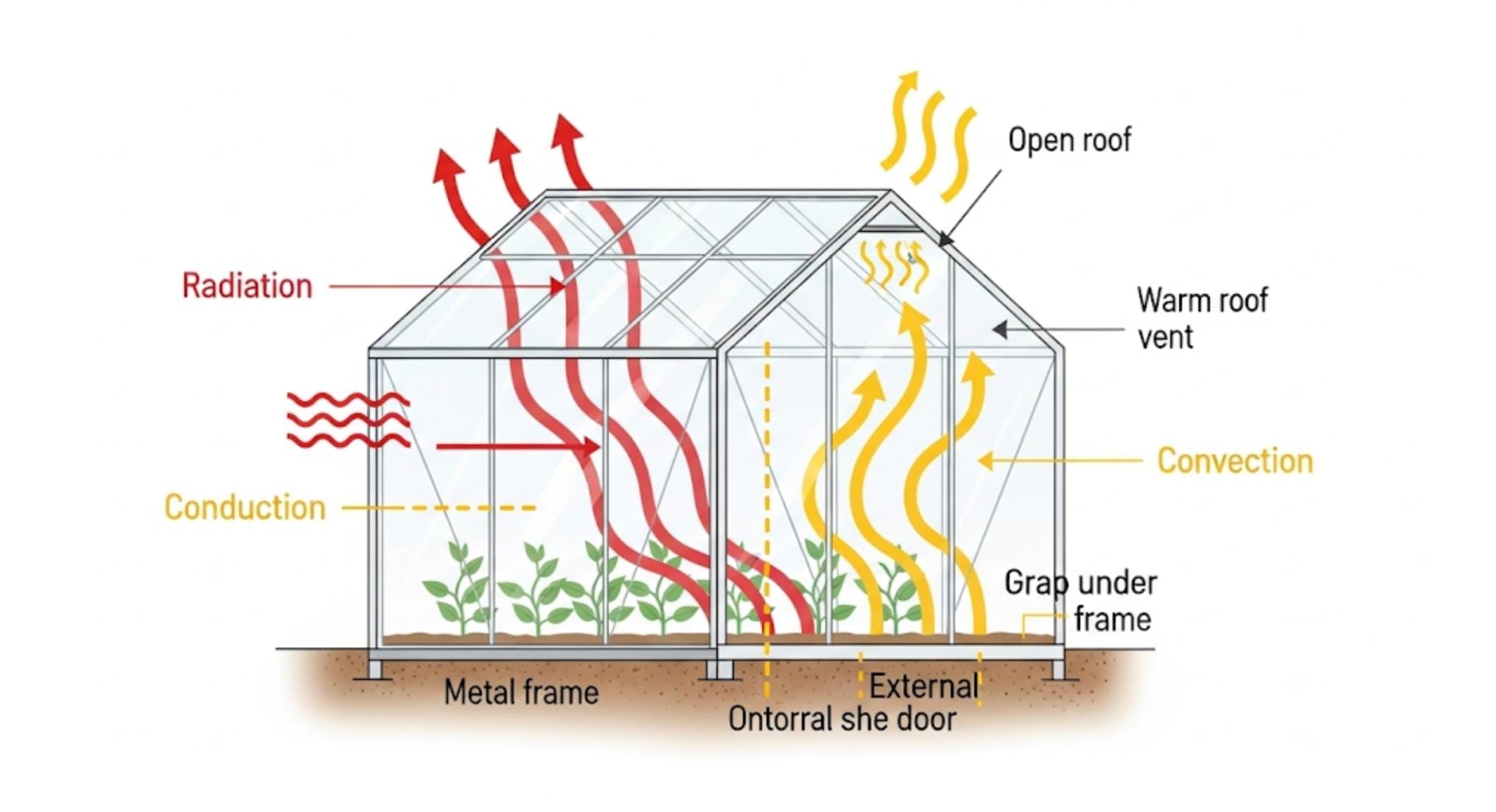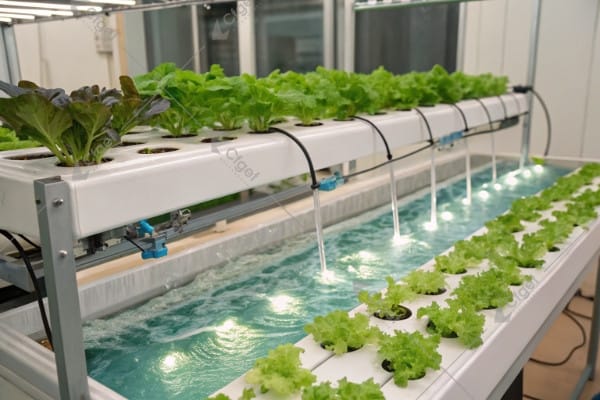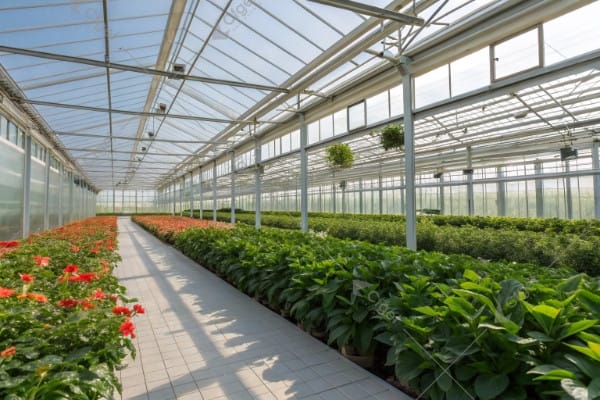Selecting the wrong greenhouse wastes thousands of dollars and leads to crop failures. Many growers struggle with poor climate control and reduced yields due to improper greenhouse selection. This guide helps you make the right choice.
The right greenhouse combines appropriate size, quality glazing, durable frame materials, and essential systems for your specific growing needs. This guide walks you through each critical decision factor to ensure your investment delivers maximum returns.
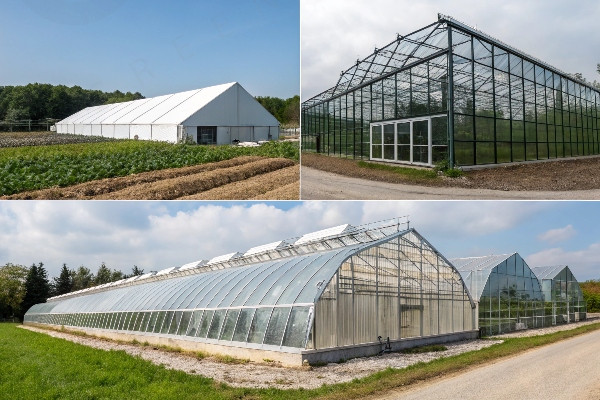
With over 28 years in the greenhouse industry, I’ve seen countless growers make costly mistakes when selecting their growing structures. As the technical director at CFGET, I’ve helped clients across Southeast Asia, Europe, and Central Asia avoid these pitfalls. Let me share what I’ve learned about creating protected growing environments that truly work for your specific situation.
Don’t Miss:——Winter Greenhouse Heating Strategies: Keeping Your Plants Warm Efficiently?
You might like:——The Ultimate Guide to Commercial Strawberry Greenhouses: Boost Your Yield & Profits
What Size Greenhouse Do You Need? (Hobby vs. Commercial Scale)
An undersized greenhouse limits growth potential while oversized structures drain resources. Many growers misjudge space needs, creating operational inefficiencies and reduced profits. Proper sizing optimizes your investment.
Your greenhouse size should match both current needs and future expansion plans. Hobby greenhouses (100-500 sq ft) suit home gardeners, while commercial operations require 1,000+ sq ft with scalable designs based on crop types and production goals.
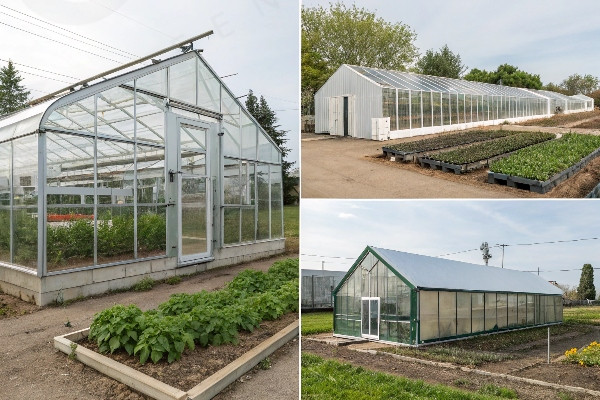
Size selection represents the foundation of your greenhouse investment. I remember visiting a flower grower in Thailand who initially purchased a 500 sq ft greenhouse for his operation. Within six months, he realized this space was too small as demand grew, forcing him to build a second structure with different specifications. This created inefficiencies in his workflow and inconsistent growing conditions between structures.
When determining size, start by defining your growing objectives. Hobby growers typically need between 100-500 square feet for personal use or small-scale selling at local markets. For commercial production, 1,000 square feet serves as a minimum starting point, with most successful operations beginning at 5,000+ square feet to achieve economies of scale.
Available land and budget naturally constrain your options, but I always advise clients to build the largest greenhouse they can reasonably manage and afford. Expansion costs more per square foot than building larger initially. Consider your typical crop mix as well—tall crops like tomatoes and cucumbers demand more vertical space than leafy greens or flowers.
Workflow efficiency matters tremendously in commercial settings. Allow enough space for equipment access, worker movement, and processing areas. A common mistake is filling every inch with growing space without considering operational flow, which creates bottlenecks during harvest or maintenance.
Local permits and zoning regulations may also impact your size decisions. Some jurisdictions classify structures differently based on square footage, potentially triggering additional requirements beyond certain thresholds. I’ve worked with clients in Europe where building permits weren’t required for structures under 200 square meters, making this a natural size limitation for initial projects.
Ultimately, the right size balances current needs with future growth plans while maximizing return on investment. When in doubt, I suggest erring on the side of slightly larger rather than smaller—the flexibility to grow into your space proves invaluable as your operation evolves.
Glazing Matters: Comparing Glass, Polycarbonate, and Film Options
Poor glazing choices lead to energy inefficiency, light deprivation, and shortened greenhouse lifespans. Many growers overlook this critical component, resulting in stunted crops and increased costs. Quality glazing significantly impacts profitability.
Greenhouse glazing determines light transmission, heat retention, and durability. Glass offers excellent clarity and longevity but costs more. Polycarbonate provides better insulation and impact resistance, while films offer affordability with shorter lifespans.
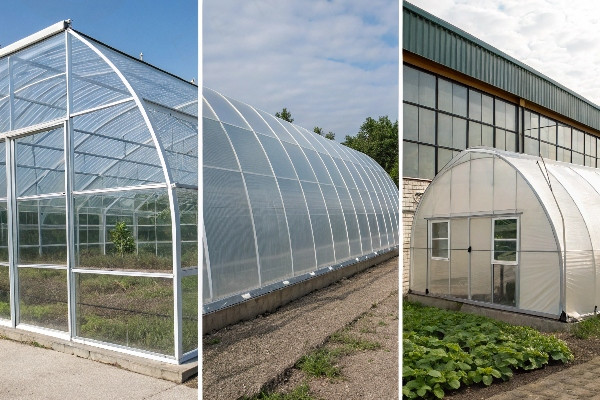
Glazing selection might be the most consequential decision after size determination. This covering material directly affects light transmission, heat retention, and overall greenhouse durability. I recall consulting for a tomato producer in Kazakhstan who initially chose single-layer polyethylene film to save money. Due to their extreme winter conditions, heating costs quickly exceeded what they would have spent on better-insulated polycarbonate panels. The subsequent retrofit cost them an entire growing season of lost production.
Glass remains the premium choice for light transmission, maintaining 90%+ transparency even after decades of use. Its incredible durability (25+ year lifespan) and resistance to scratching makes it ideal for permanent structures. However, glass comes with significant drawbacks: it’s heavy, requiring robust and expensive supporting structures; it breaks more easily than alternatives; and single-pane options provide poor insulation. Double or triple-glazed glass improves thermal performance but adds substantial cost and weight. I typically recommend glass for ornamental displays, research facilities, or high-end commercial operations in moderate climates.
Polycarbonate panels have emerged as the preferred option for many of my commercial clients. Twin or triple-wall versions offer excellent insulation (R-values of 1.42-2.50) while still transmitting 80-90% of available light. With typical lifespans of 10-15 years and strong impact resistance, these panels handle everything from hailstorms to heavy snow loads. The cellular structure traps air for insulation while still allowing diffused light that prevents plant scorching. The main drawbacks include eventual yellowing in intense UV environments and higher initial costs than film options.
Polyethylene and other film coverings provide the most economical entry point, especially for seasonal growers or those in developing regions. Modern greenhouse films include specialized additives for UV resistance, infrared heat retention, and anti-condensation properties. Most films last 3-5 years before requiring replacement, making them particularly suited to operations that frequently change crops or configurations. Films also install quickly and can be adjusted seasonally. Their disadvantages include reduced durability, potential for tearing, and typically poorer insulation values unless installed in multiple layers.
Your climate should heavily influence your glazing decision. In hot regions like Southeast Asia, I often recommend polycarbonate or films with heat-diffusing properties. For cold European environments, double-wall polycarbonate or insulated glass provides crucial heat retention. For tropical regions with high humidity, anti-condensation treatments prevent disease-promoting water droplets on interior surfaces.
Frame Materials Explained: Steel vs. Aluminum vs. Other Structures
Frame failures during storms or snow loads devastate crops and destroy investments. Many growers underestimate structural requirements for their climate, risking catastrophic collapse. Quality frames provide decades of reliable protection.
Your greenhouse frame must withstand local weather conditions while supporting glazing and equipment. Steel offers maximum strength at moderate costs, aluminum provides corrosion resistance and lighter weight, while wood and composite materials suit specific applications.
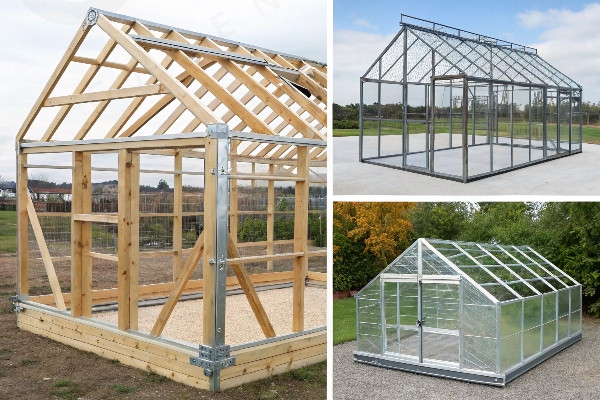
The greenhouse frame represents the backbone of your growing system, determining both its strength and longevity. I witnessed the importance of frame selection firsthand when visiting several operations after a severe typhoon hit Vietnam in 2015. The structures built with properly engineered galvanized steel remained intact, while many lighter frames suffered catastrophic failures, resulting in total crop losses and equipment damage.
Galvanized steel frames dominate the commercial greenhouse market for good reason. They offer unmatched strength-to-cost ratio and can support heavy snow loads, hanging equipment, and crop trellising systems without deflection. Modern hot-dip galvanization processes provide excellent corrosion resistance, typically lasting 20-30 years even in humid environments. Steel’s primary disadvantages include its weight (making installation more labor-intensive) and thermal conductivity (creating potential cold spots and condensation points). For most of my commercial clients, I recommend galvanized steel frames1 with appropriate insulation at contact points.
Aluminum framing offers compelling advantages for certain applications. Its natural corrosion resistance makes it ideal for humid environments or structures with minimal maintenance. The lighter weight simplifies installation and reduces foundation requirements. Aluminum’s aesthetic appeal makes it popular for retail garden centers and ornamental applications. However, aluminum generally costs 15-25% more than comparable steel structures and provides less structural strength. For this reason, I typically reserve aluminum recommendations for smaller spans, hobby greenhouses, or specialized display structures where appearance matters significantly.
Wood frames offer natural aesthetics and excellent insulation properties but require careful material selection and maintenance. Cedar and redwood provide natural rot resistance, while pressure-treated lumber raises concerns about chemical leaching. Wood frames typically cost less initially but demand regular maintenance and ultimately have shorter lifespans (10-15 years in most climates). I occasionally recommend wood frames for small-scale organic operations or in locations where traditional appearances are valued.
Frame design matters as much as material. Quonset (hoop) structures maximize structural efficiency but limit usable space along edges. Gothic arches provide better snow shedding and more usable edge space but cost more. A-frame designs offer simple construction but less efficient space utilization. For most commercial applications, I recommend gutter-connected structures that maximize growing area while providing economies of scale for environmental control systems.
Your local climate should heavily influence frame selection. In high-snow regions across Central Asia, we routinely specify frames with 2-3 times the load capacity of those designed for tropical environments. For hurricane-prone areas, additional diagonal bracing and foundation anchoring prove essential. Even in seemingly mild climates, proper engineering ensures your structure withstands unexpected weather events that have become increasingly common.
Essential Features: Ventilation, Heating, and Irrigation Systems
Inadequate environmental systems create deadly conditions for plants through overheating, freezing, or dehydration. Many growers install insufficient systems, leading to constant crop issues. Properly designed systems ensure optimal growing conditions year-round.
Effective climate control systems turn a simple structure into a productive growing environment. Quality ventilation prevents overheating, heating systems extend growing seasons, and automated irrigation2 ensures consistent moisture levels for maximum crop health.
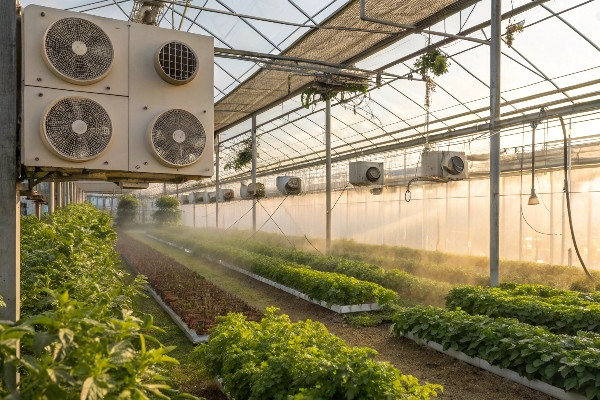
Environmental control systems transform a basic shelter into a true plant production facility. I learned this lesson early in my career when consulting for a pepper grower in Central Asia who invested heavily in an excellent structure but underspent on ventilation. During their first summer, temperatures routinely exceeded 110°F inside the greenhouse, causing flower abortion and crop failure despite having perfect plants. The subsequent retrofit cost them an entire growing season.
Ventilation represents your first defense against overheating and humidity management. Natural ventilation through roof vents and sidewall curtains works effectively for many operations, especially in regions with reliable breezes. The key is providing sufficient opening area—I recommend a minimum of 15-20% of floor area as ventilation openings. For regions with still air or extreme heat, mechanical ventilation becomes necessary. Exhaust fans combined with cooling pads can reduce temperatures by 10-15°F below ambient conditions. For most of my commercial clients, I recommend hybrid systems: natural ventilation for daily management with mechanical backup for extreme conditions.
Heating systems extend growing seasons and protect crops during cold periods. The fuel source selection depends heavily on local availability and cost: natural gas typically provides the most economical option where available, while propane, oil, or biomass systems work well in other regions. I always calculate heating requirements based on the worst-case scenarios—the coldest expected temperatures combined with highest wind conditions. For smaller structures, portable propane heaters often suffice, while larger commercial operations benefit from in-ground radiant systems or forced air units. Integration with horizontal air flow fans ensures even temperature distribution throughout the growing space.
Irrigation systems directly impact crop consistency and labor efficiency. While hand watering may work for hobby growers, commercial operations require automated solutions. Drip irrigation delivers water precisely where needed, reducing disease pressure and saving up to 60% water compared to overhead systems. For propagation areas, mist systems maintain humidity without oversaturating media. I typically recommend zone-based irrigation systems with soil moisture sensors to optimize water delivery based on actual plant needs rather than fixed schedules.
Climate control automation represents the most significant advancement I’ve witnessed during my career. Modern systems integrate temperature, humidity, light, and CO₂ sensors to create truly optimized growing environments. Computerized controls manage ventilation, heating, shade systems, and irrigation in coordinated response to current conditions. While these systems require larger initial investments, they typically pay for themselves through labor savings, reduced resource consumption, and improved crop quality.
For operations in Southeast Asia, I emphasize dehumidification and air circulation to combat disease pressure in high-humidity environments. European growers typically need supplemental lighting systems during winter months. Central Asian clients require robust heating systems with redundancy to protect crops during extreme temperature swings.
The most successful operations I’ve consulted for take an integrated approach—viewing their environmental systems as interconnected rather than separate components. This holistic perspective allows them to balance factors like ventilation and heating to maintain optimal growing conditions while minimizing energy costs.
Conclusion
Selecting the right greenhouse combines science, economics, and planning. By carefully matching your structure’s size, glazing, framework, and systems to your specific growing conditions and objectives, you’ll create an environment that maximizes productivity while minimizing operating costs.

